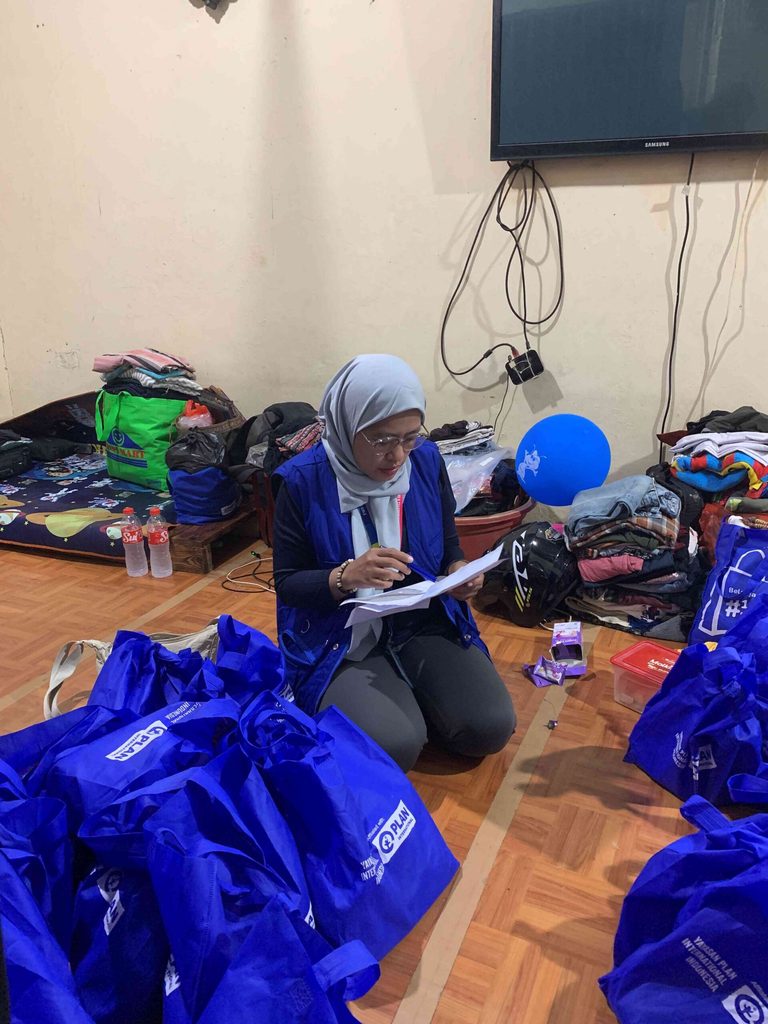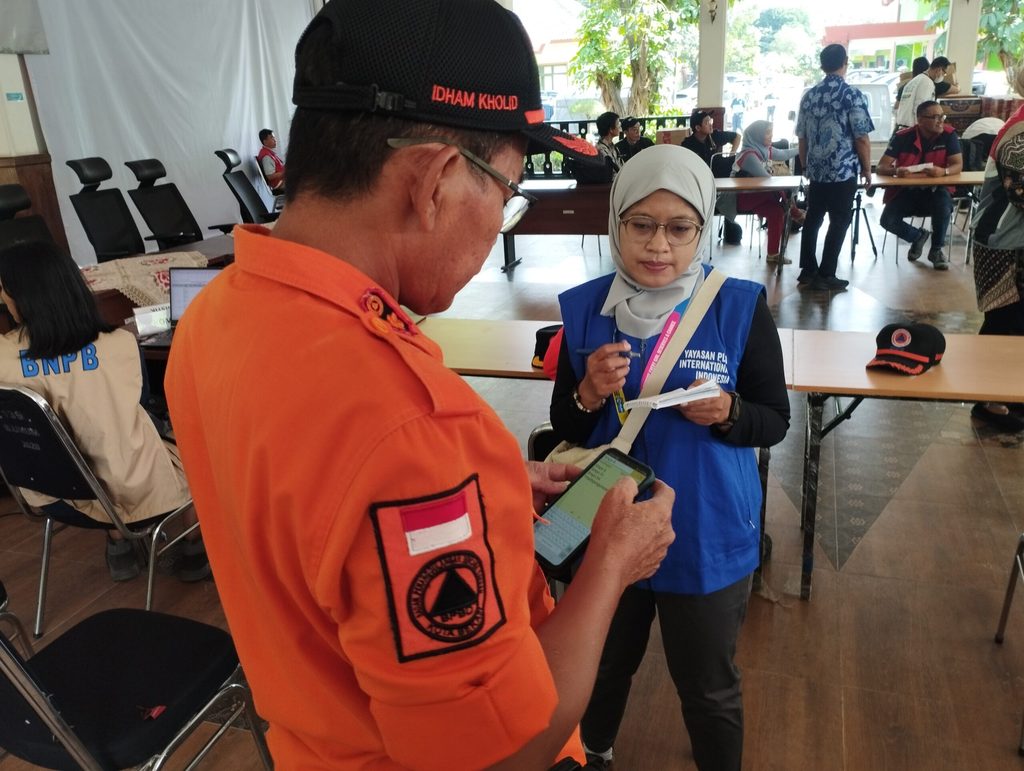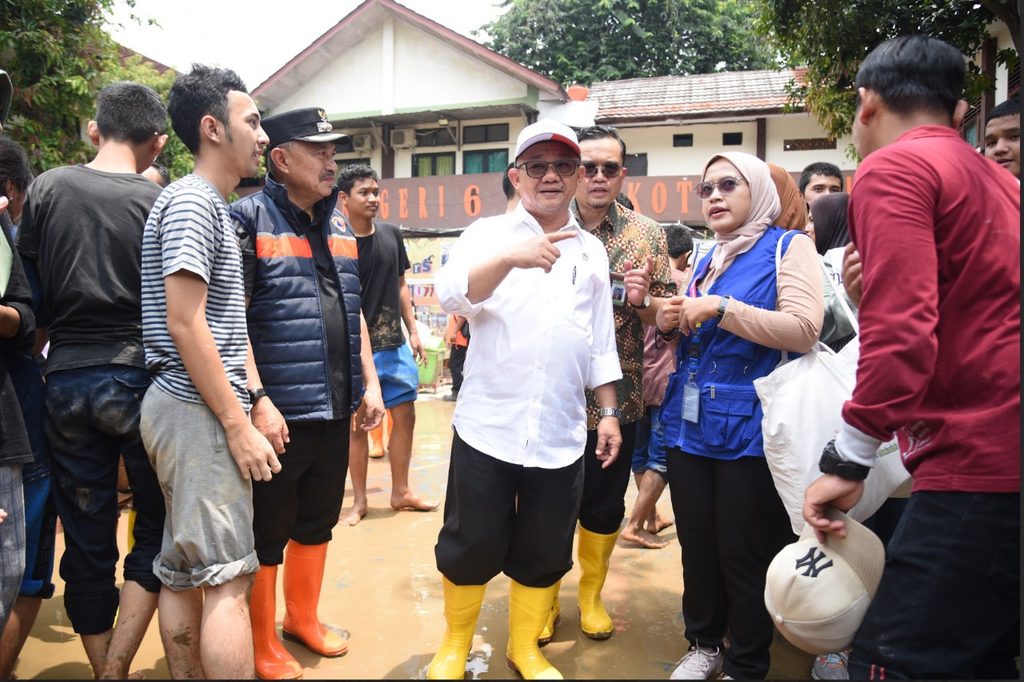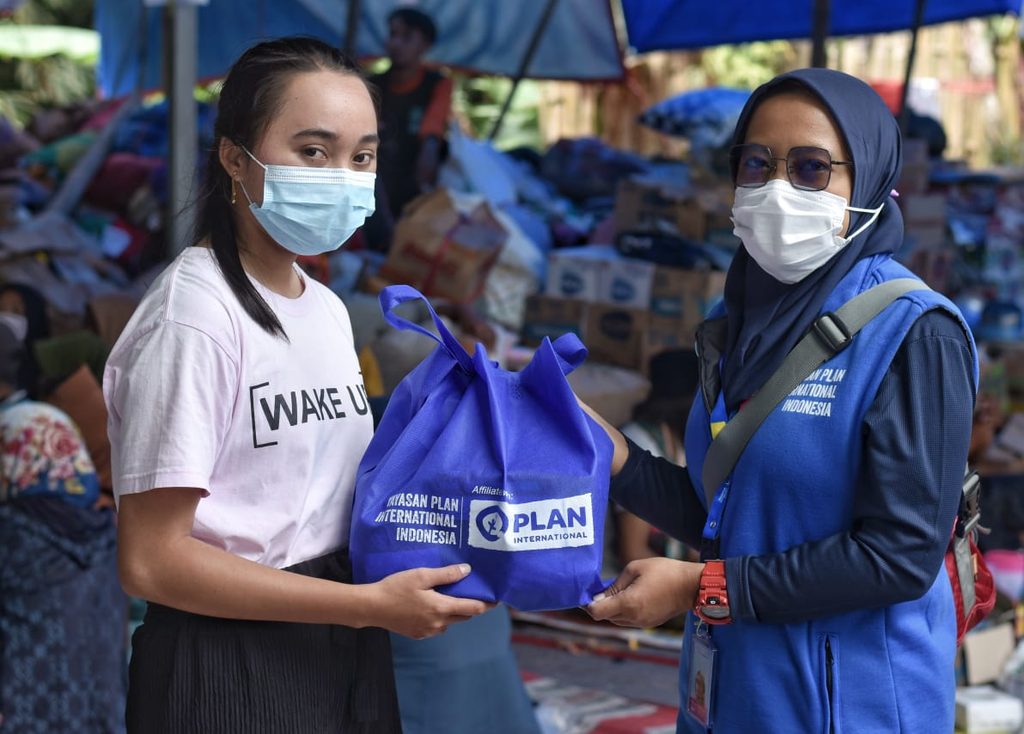Disasters don’t wait – and neither should education
5 August 2025In disaster-prone Indonesia, girls and marginalised children face unique risks when emergencies hit. Maulinna, a humanitarian expert with Plan International, shares what an inclusive, ethical response really looks like – and how it can change lives.

By Maulinna Utaminingsih, Plan International Indonesia
When I first joined Plan Indonesia’s emergency response team in 2010, I wasn’t sure where the journey would take me. What I knew was quite simple though: I wanted to help people the right way, the dignified way, without causing further harm.
Over time, what started as a calling has become a lifelong commitment. From water, sanitation and hygiene (WASH) and education in emergencies to child protection, I’ve worked in different regions and in different roles, from leading disaster response efforts to training others. The more I work closely with disaster-affected communities, the more I understand just how critical it is that humanitarian response is rapid, inclusive, and above all, protection-sensitive. At the heart of our work is one clear priority: making sure that children, especially girls, those with disabilities, and those from the most marginalised communities, are not left behind.
When distribution is unequal

Indonesia faces disasters every year, from earthquakes and floods to landslides and volcanic eruptions. These events ripple through every part of life, disrupting health services, education, livelihoods, and public safety. But while the response efforts are often well-intentioned, I’ve seen first-hand how they can fall short of fundamental humanitarian principles. Too often, there is a lack of understanding about what an effective and ethical emergency response really looks like. I’ve heard people say that, ‘aid distribution is unequal’, and it’s true. Often, aid is distributed unevenly, sometimes requiring documents that survivors have lost in the chaos. Donations can pile up but remain undelivered due to a lack of personnel or planning. Sometimes, well-meaning people bypass formal channels altogether, creating uncoordinated distributions that result in some families receiving multiple school bags — in one case, a single child received 13 school bags — while others go without basic essentials. One young woman I met told me she didn’t feel comfortable asking for sanitary pads at a relief centre because every volunteer was male. It’s a small detail that speaks volumes. Without a gender-sensitive approach, we risk silencing the needs of half the population.
Children, too, face unique struggles. Some are embarrassed to return to school without uniforms or supplies. Others are bullied for wearing different clothes or transferring into unfamiliar schools. The emotional impact of a disaster doesn’t end with physical safety; it remains in shame, disruption, and the loss of routine.
Involving people in shaping the help they receive
That’s why our work at Plan Indonesia is focused not just on response, but on building systems that protect, include, and empower people and communities. We’ve distributed hygiene kits containing items like underwear that are often forgotten, but critically needed. We’ve trained teachers on how to continue education in emergencies. These small but meaningful steps are making a big difference.
In every response, we also set up feedback mechanisms with support from local government and youth volunteers. These systems have become an important bridge, allowing affected communities to ask questions, make suggestions, or quite simply be heard and be seen. People were grateful that their concerns were met with real answers, and for many, it was the first time they felt included in shaping the help they received.

Education can’t be overlooked
Still, there is much more to do. My biggest concern is that education continues to be overlooked in the early days of a disaster. Schools are often used as evacuation shelters, and the learning process is put on hold. But for children, school is more than just a classroom; it’s stability, safety, and a space to recover emotionally.
If I could make one change, it would be to ensure that every school in Indonesia — not just on paper, but in practice — is prepared for disaster. That means drills, not just documents, and community participation, not just policies, and it means making sure that infrastructure is truly safe, so schools can remain open even when everything else shuts down.

Invest in training
My message to donors and global partners is simple: invest in training. Support teachers, youth, and education authorities across all regions, so that when disaster strikes, the response is fast, inclusive, and appropriate. We can reach a future where no child is harmed at school, and no day of learning is lost.
What gives me hope is the belief that children deserve to feel safe, even in times of crisis. We are not doing this alone, either. Collaboration with government, schools, and local communities is precious and a work in progress. I believe that if we engage young people now, we’re not just helping in the moment; we’re building a more resilient, more prepared generation for the future.

Categories: Emergencies


